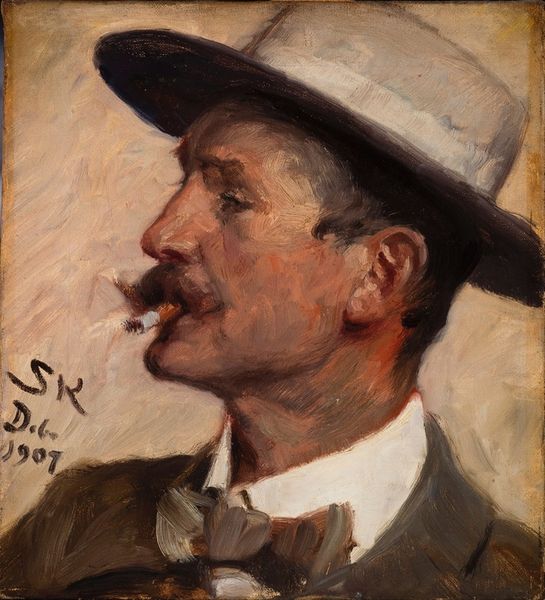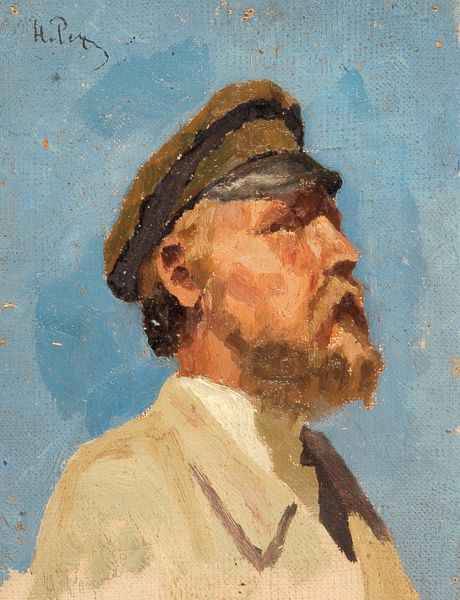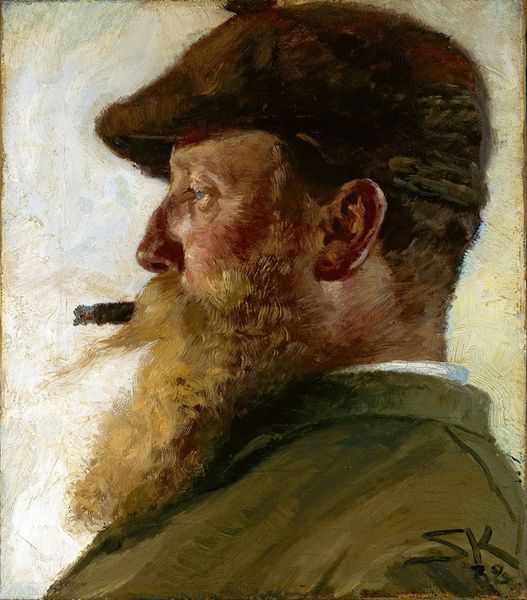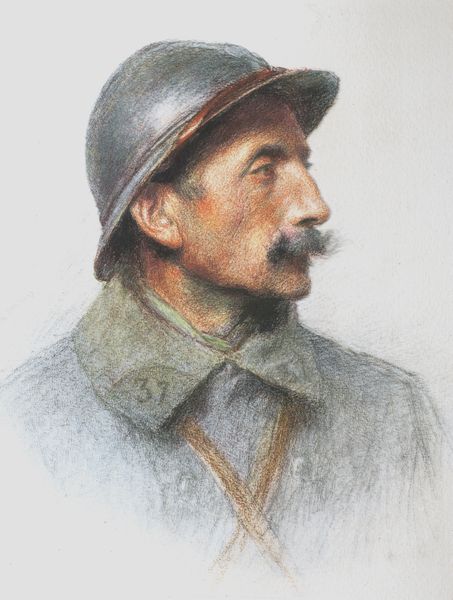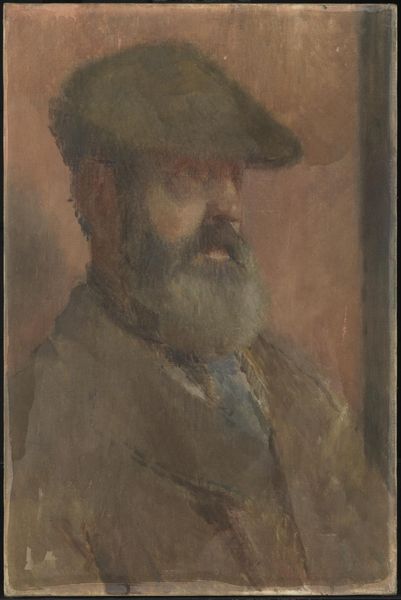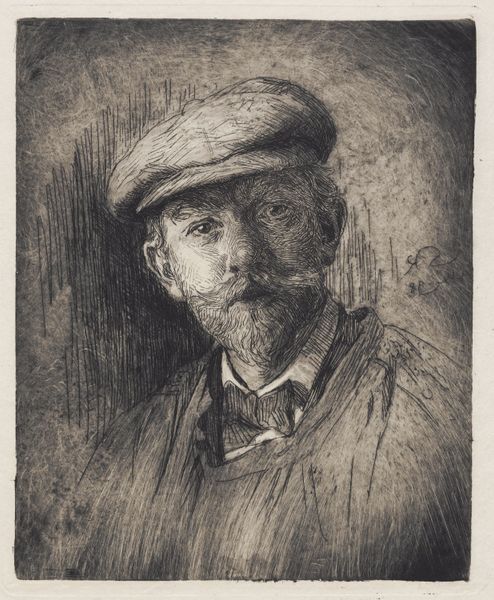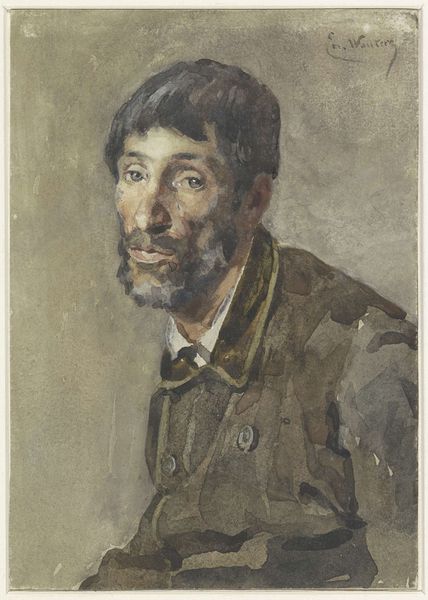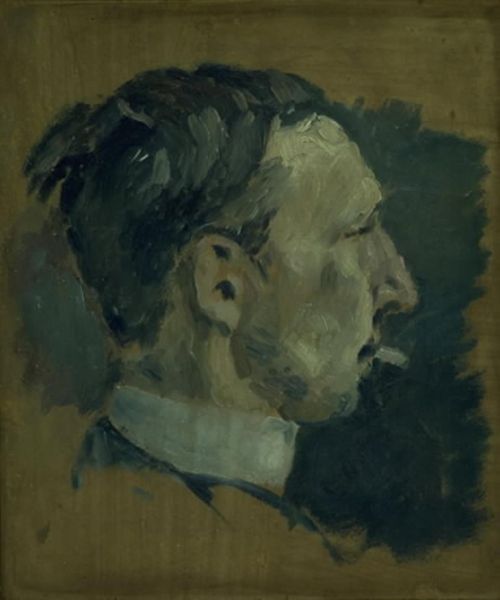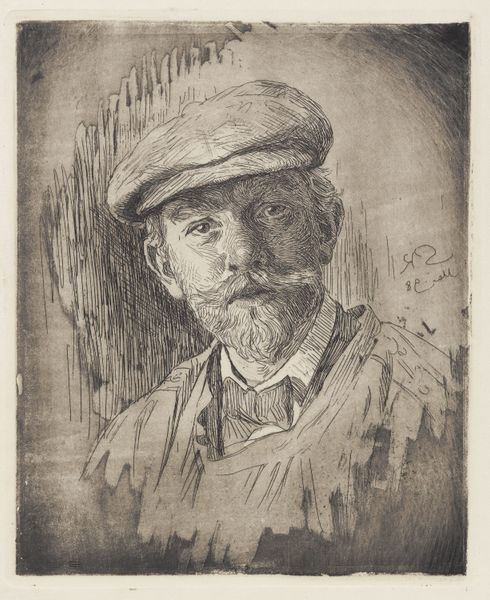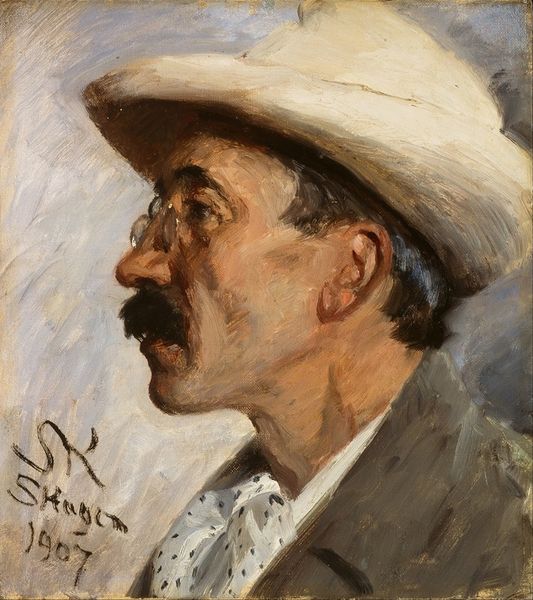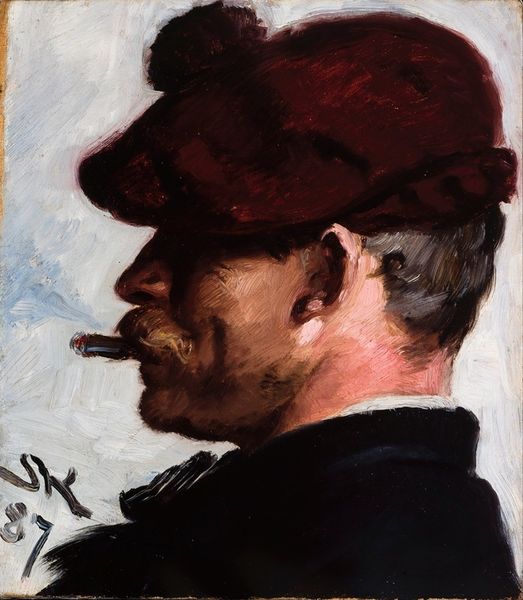
oil-paint
#
portrait
#
self-portrait
#
impressionism
#
oil-paint
#
figuration
#
portrait reference
#
portrait head and shoulder
#
animal portrait
#
animal drawing portrait
#
portrait drawing
#
facial study
#
facial portrait
#
portrait art
#
modernism
#
fine art portrait
#
realism
#
digital portrait
Copyright: Public domain
Curator: The museum is delighted to present Léo Gausson’s “Autoportrait” from 1889, rendered in oil on canvas. Editor: My first impression is the intimacy of the gaze, and how earthy the colors are – a very personal depiction it seems. I find the browns and reds both warming and quite melancholic. Curator: Absolutely. Let's delve into the structure; Gausson masterfully employs a limited color palette, adhering closely to shades of brown, red, and ochre. Semiotically, the beret atop his head hints at bohemian leanings or a desire for artistic identification, almost a proclamation. Editor: Yes, but let’s also consider the artist’s touch. The materiality is crucial here: look at the texture. Notice the visible brushstrokes, how they give form and substance, building up layers, one upon another. It gives a rough-hewn quality, which feels so much less like the product of "high art" and more closely akin to laboring craft. Curator: Indeed. And the composition is carefully considered; he’s positioned slightly off-center. That asymmetrical arrangement lends a dynamism to the work that would be absent if it was a typical portrait. Editor: The thick impasto brings a tangible presence to Gausson, drawing attention to the handmade quality of the art object. We shouldn't disregard the socio-economic elements at work. Who had the resources and leisure to commission or create such a work? What was the artistic scene like at the time? All this shapes not just the painting but its meaning too. Curator: Precisely. Examining these visual cues allows us to read Gausson’s statement of self within the conventions and innovations of late 19th-century portraiture. His choice to portray himself with such directness indicates a clear artistic statement. Editor: Exploring art through its materiality provides crucial socio-cultural understanding, linking art, labor, and identity within historical production networks. That perspective shifts our interpretation toward the economic factors in how art has evolved to today. Curator: Well, for me, unpacking how visual components shape meaning makes viewing art quite special and insightful. Editor: And, I believe understanding its origins in the making adds richness and a practical view to those readings, enhancing one's personal insight into how and why we regard and appreciate a work of art.
Comments
No comments
Be the first to comment and join the conversation on the ultimate creative platform.



